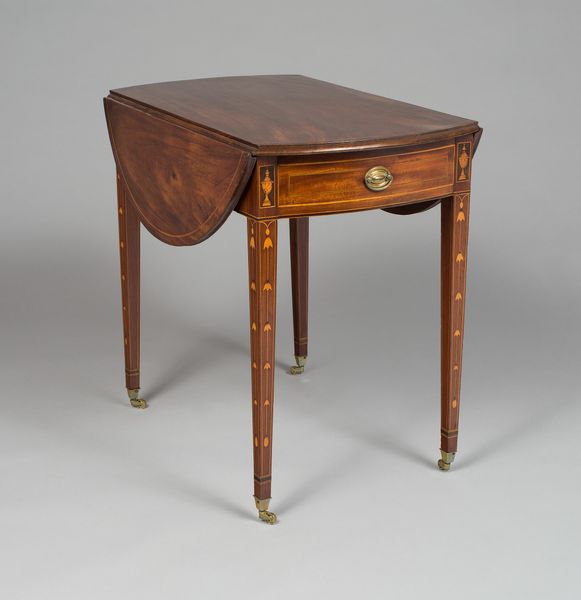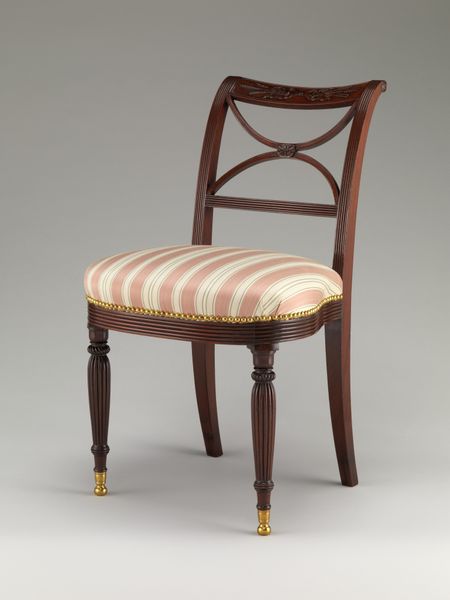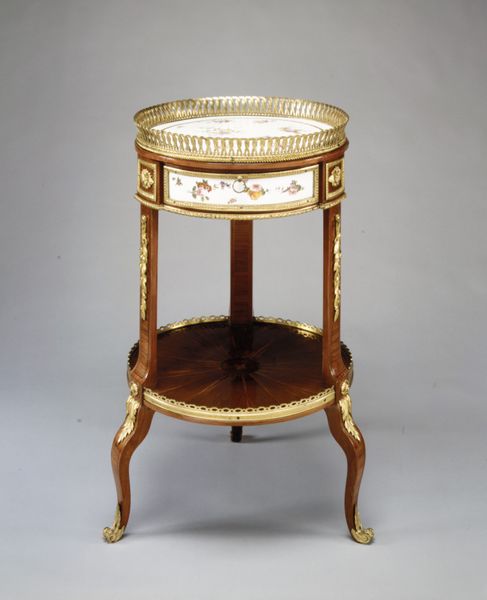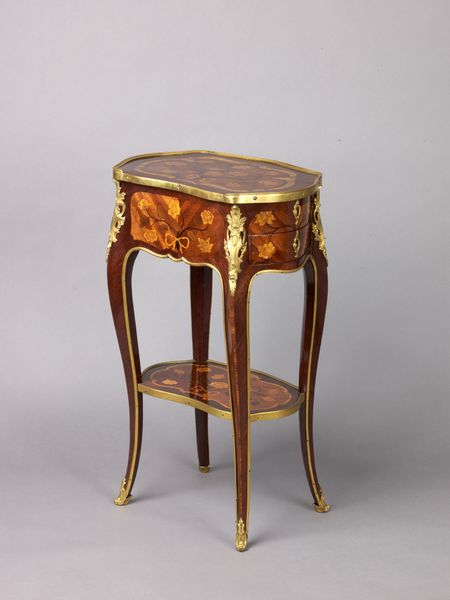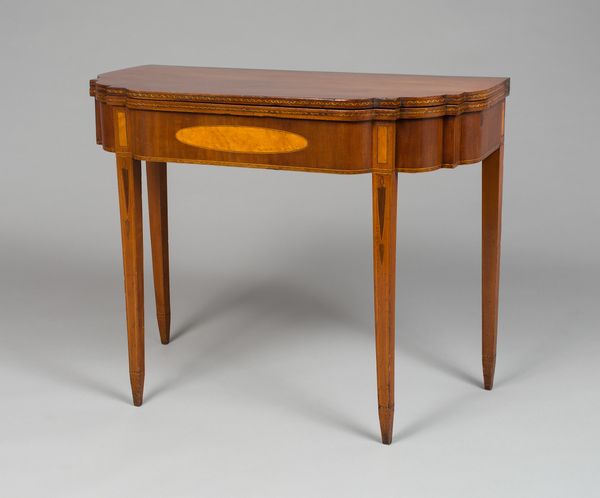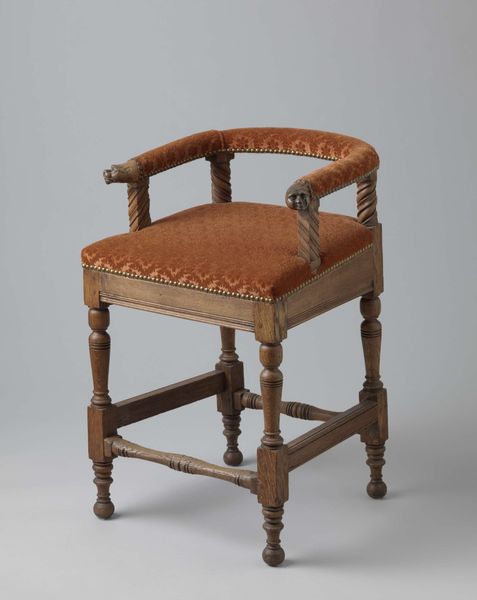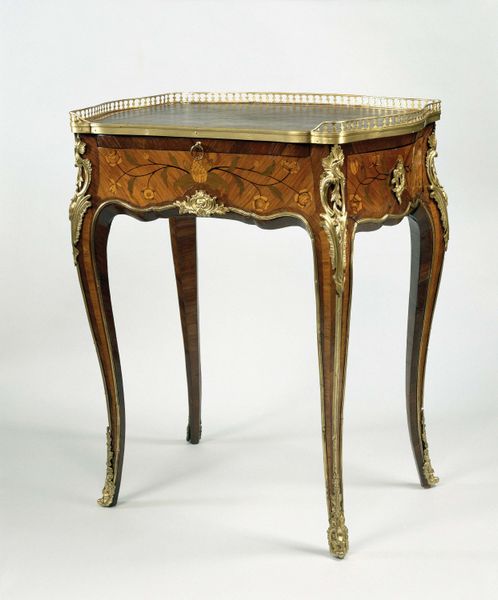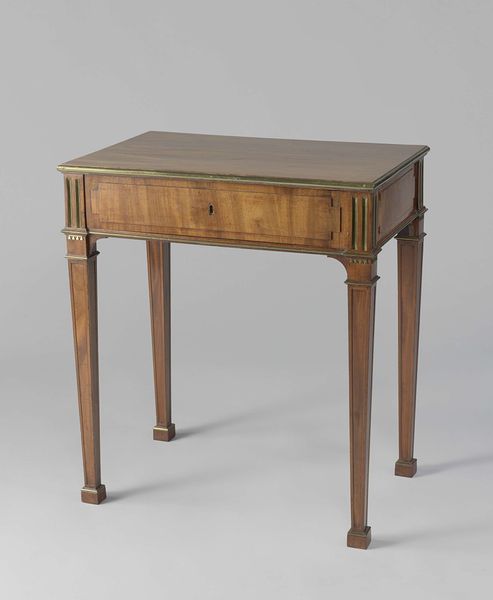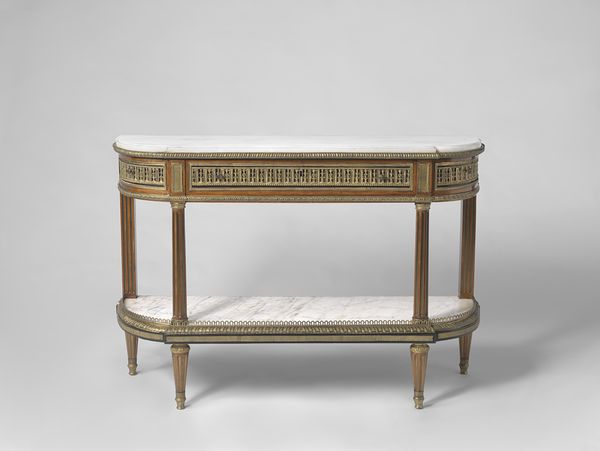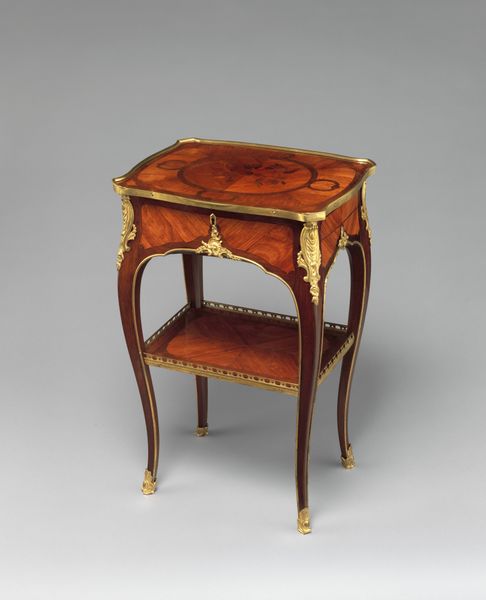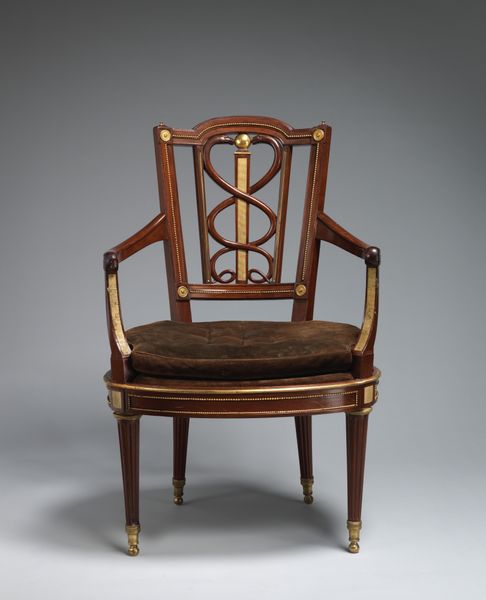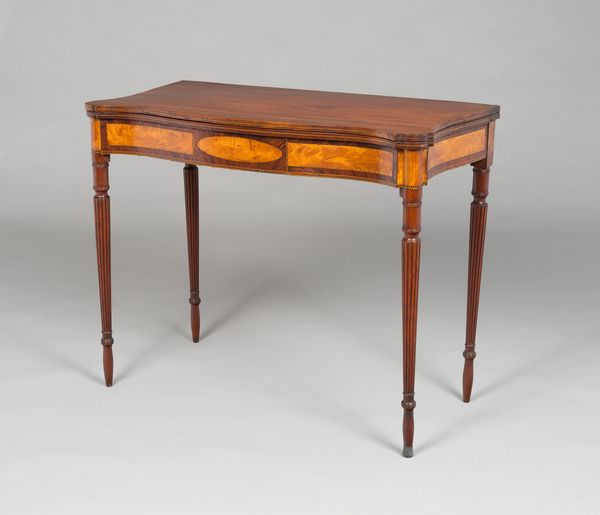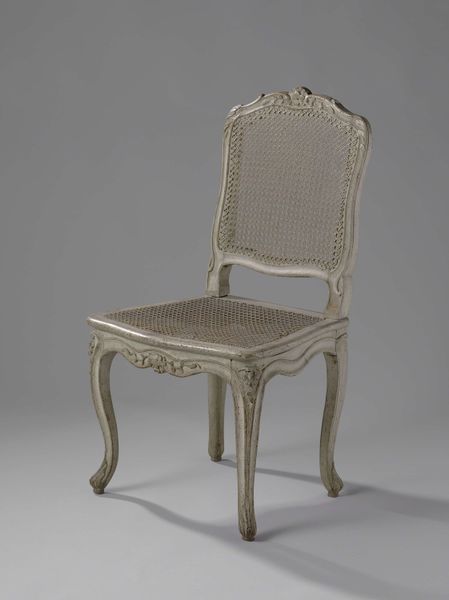
Penanttafel met twee half ovaalvormige marmeren bladen met galerij c. 1785 - 1790
0:00
0:00
metal, wood
#
neoclacissism
#
metal
#
furniture
#
wood
#
decorative-art
Dimensions: height 92 cm, width 83.5 cm, depth 42.5 cm, weight kg
Copyright: Rijks Museum: Open Domain
Editor: Here we have a penant table made around 1785-1790 by Johann Gottlieb Frost. The materials include wood and metal, and the piece has a double half-oval marble top with a gallery. The overall design looks light and airy. It is amazing to see such delicate features on a table! What do you see in this piece, especially considering the period? Curator: Ah, yes! I am immediately transported to a salon, powdered wigs and hushed conversations, don't you think? For me, it whispers of Neoclassical aspirations – a desire to return to the "purity" of classical forms, but reinterpreted through the lens of late 18th-century refinement and a hint of whimsy, visible especially in the fluted legs and the gallery detailing around the marble tops. Do you get a sense of that striving for perfect proportion? Editor: Yes, I see what you mean about striving for perfect proportion, especially when you point out the fluted legs! I initially overlooked the small details but it really is so thoughtfully made. Are there other reasons you refer to the piece's "purity"? Curator: Well, I think the restraint in the decoration, compared to the exuberance of the Rococo style that preceded it, is significant. Also, consider the materials: the cool marble juxtaposed with the warm wood. It's a balanced dance between extravagance and understatement, like a subtle burn. It makes one think if Frost did it intentionally! What about you? Editor: Now that you mention it, the subtle details like that interplay between marble and wood definitely speak to a restraint I did not pick up at first. This certainly isn’t the heavy, gilded furniture that comes to mind when I think of that era. The table feels fresh in some ways. Curator: Fresh is a beautiful way to put it! It suggests a lightness of touch and spirit that I admire, making the table a fascinating expression of transition in art and society. Editor: I agree completely! Thanks for your insight, I appreciate your making visible what went unseen!
Comments
No comments
Be the first to comment and join the conversation on the ultimate creative platform.
